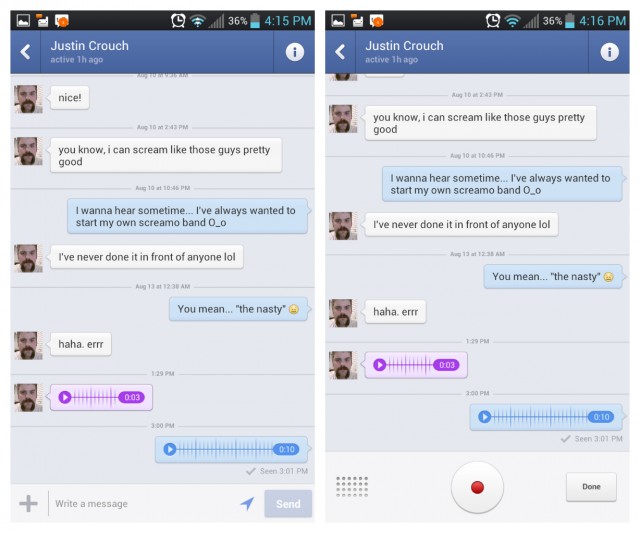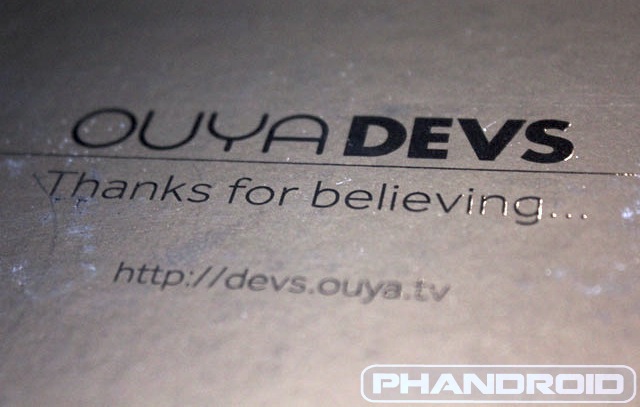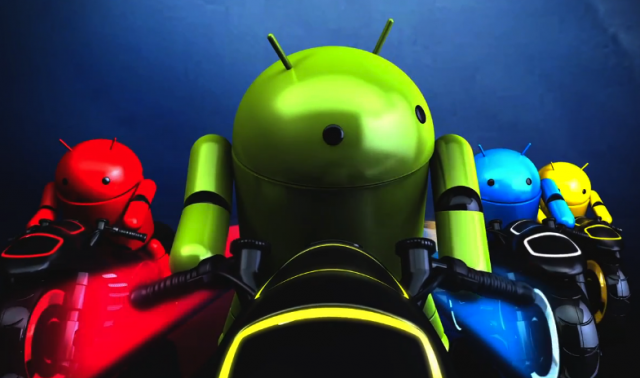Android Authority |
- Acer’s cheap Iconia B1 tablet heading to India, to cost a bit more than expected
- Asus ME301T MemoPad 10 leaks with Tegra 3 and Android 4.1, CES unveiling in the cards
- HTC’s CEO: “The worst has probably passed. 2013 will not be too bad.”
- Alcatel One Touch Scribe HD: The first phone to use MediaTek’s quad core chip
- Galaxy S4 press release image reportedly leaked already
- Motorola confirms Jelly Bean update for Droid Razr and Razr Maxx coming in Q1 2013
- Leak: ZTE to introduce a 5.7 inch 720p quad core phablet called the P945
- The Samsung Galaxy S4 will be at CES next week, but behind closed doors
- Corning Gorilla Glass 3 to be demoed at CES, but will it end up in 2013 devices?
- 1 in 10 of all Android devices are running Jelly Bean; Gingerbread still dominates
| Acer’s cheap Iconia B1 tablet heading to India, to cost a bit more than expected Posted: 04 Jan 2013 03:06 AM PST
The still-unannounced Acer Iconia B1 tablet has been the subject of online reports since the third week of December last year. Has it finally arrived? No, it has not. But if the most recent online reports on it are to be believed, then it looks like we’re going to see a launch in the next couple of weeks, at a price that will surely make most anyone’s wallet happy. According to a report on NDTV, the Android-powered Iconia B1 is set to arrive in India before the end of January. But instead of being called the Iconia B1, it will be called simply Iconia B. Is there an Acer tablet called the Iconia A locked up somewhere, with absolutely no hope of ever being released to market in the future? Unlikely. The letter B in the Iconia B’s name probably just stands for the word “budget” — which would make perfect sense. When the earliest reports on the Iconia B came out, it was rumored to have a $99 price tag. Now, as the actual launch date draws near, it will reportedly sell at $149 instead. Though that isn’t exactly as cheap as what some people thought it would be, it’s still a full $50 cheaper than the Asus-manufactured Google Nexus 7, which still goes for $199 a piece. Not to mention, it’s a fairly decent price for a tablet that is expected to have the following specs: 7-inch screen @ 1024×600, 1.2GHz dual-core MediaTek CPU, 512MB RAM, 8GB storage, Bluetooth 4.0, GPS, Wi-Fi, and microSD card support. It will also ship with Android 4.1 Jelly Bean. The Iconia B was also spotted briefly on Acer’s official web site, but its page has since been taken down and only a copy of it exists via Google Cache.
With a 7-inch screen and an overall weight of just 320 grams, this claim is not so hard to believe. The question now is, when is Acer going to actually release it? No one knows for sure, but expect to find it here as soon as that information finally becomes available. Related Posts |
| Asus ME301T MemoPad 10 leaks with Tegra 3 and Android 4.1, CES unveiling in the cards Posted: 04 Jan 2013 02:24 AM PST
Asus has pretty much always been an important tablet player, but ever since the Google co-branded Nexus 7 got out the bar of expectations got a huge bump. Now we're all eyes on the Taiwan-based electronics company, which is seen by some as one of the only hopes of Android ever overthrowing Apple's iPads from their leadership positions. But does Asus have enough fire to come up with awesome tabs without Google's direct help? We shall probably see about that in only a few short weeks, when, according to piling rumors, several new Asus devices will be thrown to the lions. A $99 7-incher should carry the Nexus 7 torch further ahead, an ME172V will most likely up the spec and price ante a bit, while business consumers will have a 10-incher designed specifically for them. This last slate has just been leaked, and, although it's far from official, we're ready to bet it'll be on display at CES in Vegas next week. The 10-incher is known right now as the ME301T MemoPad 10, but we surely hope to see it marketed under a different and "cleaner" name. As for the specs, Asus has definitely stepped things up a notch, although the ME301T will still be unable to battle it out with the iPad hardware-wise.
The 10.1-inch display is expected to boast a run of the mill 1,280 x 800 pixels resolution, while under the hood there'll be an NVIDIA Tegra 3 quad-core processor (unknown clock speed) and 1 GB of RAM. The best news is probably the running of Android 4.1 Jelly Bean, while the 16 GB of on-board memory and existence of both Wi-Fi only and Wi-Fi and 3G connected models doesn't surprise us too much. What kind of shocks us however is the rumored price across Europe. According to online listings, retailers in Spain and Denmark could charge up to €322 for the tab, which is around $422 and definitely way too much for a 10-incher with not a whole lot of oomph. It's true, the rumor that this will be targeted towards business users tells us that there might be a few premium features and functions there, which could explain this apparent price bump. Also, if Europeans will get it for a little over €300, Americans should have it up for grabs for around $300 and that's not quite prohibitive. But enough with the guesses and let’s just mention that the Asus ME301T MemoPad 10 is expected to land on the Old Continent around mid-February in white, blue and fuchsia. Before that, we’ll be on the ground in Vegas next week to bring you all that’s new and exciting in the Android world, so stay tuned. Related Posts |
| HTC’s CEO: “The worst has probably passed. 2013 will not be too bad.” Posted: 04 Jan 2013 02:08 AM PST
HTC isn’t exactly in the best shape. Their stock price is off by 80% compared to its peak in 2010, the launch of the Sensation is 2011 was a train wreck, and while the One X was a great phone when it was announced in early 2012, Samsung’s Galaxy S3 stole all that device’s thunder when it came out during the summer months. So what’s the company going to do to turn things around? The first step is to admit that you’ve hit your bottom. HTC’s CEO, Peter Chou, spoke to The Wall Street Journal today about the performance of the company, and he said:
Dale Gai, an analyst at Barclays, says HTC is in a tricky place mainly because they don’t make any components. That, more so than the marketing problem, is what we feel puts HTC in a terrible position. Samsung makes their own screens, processors, memory chips, and many other parts required to make a mobile phone. The same can be said about LG. Now yes, Apple doesn’t “make” their own components, but they do buy equipment for their component suppliers. When you really stop and think about it, what exactly does HTC do? They take Google’s software, Qualcomm’s chips, Sharp’s screens, and then slap everything together. As the rest of the industry tries to become vertically integrated, HTC is stuck acting like a company from the the turn of the century. Other than firing lots of people and going stock Android, we don’t know what advice to give this company. Related Posts |
| Alcatel One Touch Scribe HD: The first phone to use MediaTek’s quad core chip Posted: 04 Jan 2013 01:41 AM PST
Last month we told you about MediaTek’s new quad core chip, the MT6589. Unlike NVIDIA’s Tegra 4, which has four ARM Cortex A9 cores, or Qualcomm’s Snapdragon S4 Pro, which has four Qualcomm Krait cores, the MT6589 uses ARM’s Cortex A7. What does that mean in plain English? Companies that use the MT6589 will be legitimately allowed to say that their devices have a quad core chip inside, but the benchmarks show that said chip is barely faster than a one year old dual core Snapdragon S4. So who is going to be the first to use this new deceptively marketed piece of silicon? According to Engadget and C|Net, the answer is Alcatel. That’s not a company one typically associates with high quality devices, but that’s partly due to the fact that most Alcatel devices are sold in China. In fact, Alcatel isn’t even Alcatel, it’s a Chinese company called TCL that acquired the rights to use the Alcatel brand quite a number of years ago. Will you be able to buy this device in the United State or Europe? That’s a tricky question to answer. It’s notoriously difficult to find products with MediaTek chips outside a handful of countries (China, India, Russia). We think it has something to do with patents, but we can’t confirm that. That being said, Qualcomm announced their own quad core Cortex A7 chip called the MSM8x26. There’s a much better chance of that thing showing up in our neck of the woods. Should you even buy one of these quad core chips just to say you have a quad core phone? We’re going to say no, but at the same time we recognize that marketing works. Even if it’s shady, it sill lures people in to make a purchase. Save your pennies and buy a Galaxy S III. Related Posts |
| Galaxy S4 press release image reportedly leaked already Posted: 04 Jan 2013 01:36 AM PST
Just earlier today we told you that the Galaxy S4 will make an appearance at CES 2013, at least behind closed doors, and now we're going to show you a first leaked press image of the device. Yes, it's not official, and yes, we're advising you to take everything with a grain of salt. We've seen the same scenario last year when countless Galaxy S3 leaked images made their way to the web well ahead the official announcement of the flagship handset. And we expect to see the same thing happen this year. Naturally, there's always a chance that one of these pictures is real, which is why we're looking at it in the first place. Sam Mobile says the image is coming from a Samsung insider that claims to have access to even more images, although just the one above is available. In case the handset in the image is indeed real, the Galaxy S4 could feature a larger edge-to-edge display and will come without a Home button. Previous reports would confirm the fact the Galaxy S4 is expected to offer users a larger display – a 5-inch Super AMOLED Full HD display with 1920 x 1080 resolution is rumored for the device. Other features include 2GHz quad-core Exynos 5450 processor, Mali-T658 GPU, 2GB of RAM, 13-megapixel camera and Android 4.2 Jelly Bean. But, just like with the image above, nothing is confirmed yet. What do you think about this Galaxy S4 render? Related Posts |
| Motorola confirms Jelly Bean update for Droid Razr and Razr Maxx coming in Q1 2013 Posted: 04 Jan 2013 01:31 AM PST
Some lucky owners of the Droid Razr and Razr Maxx received an early Jelly Bean surprise from Verizon last Christmas, while the rest are still waiting for the non-buggy update to hit their device. As per Motorola's software upgrade schedule, we know that Jelly Bean is guaranteed to come to the two handsets this year. Now, we're hearing that Moto will roll out the Android 4.1 software update for the Droid Razr and Droid Razr Maxx in Q1 2013. The confirmation was posted on Moto's Facebook page. It's not as specific as we're sure some would like, but it's better than the previous timeline. We do hope that the update will come early in the quarter and not at the end of March. If you don't want to wait that long, you can always make the jump manually, though be warned that the Jelly Bean ROM that folks were getting last week is apparently still full of bugs. Related Posts |
| Leak: ZTE to introduce a 5.7 inch 720p quad core phablet called the P945 Posted: 04 Jan 2013 12:54 AM PST
Large phones are something you’re going to be seeing a lot of this year. We all laughed at Samsung when they introduced the 5.3 inch Galaxy Note back in 2011, but man, we fell head over heels with the 5.5 inch Note II just a short year later. Rumor has it that the next Note is going to have an even larger 6.3 inch screen! The rest of the industry has started to take notice. Photos of Huawei’s 6.1 inch Asend Mate are floating around the internet, and now there’s news of a new device from ZTE called the P945. According to @evleaks, who is a Twitter user you should definitly follow if you want to know about the latest gear before it’s officially announced, the P945 is going to be a 5.7 inch phablet with a 720p screen, quad core processor, and a massive 3,000 mAh battery. It has an 8 megapixel camera, and right now it’s China only, but there’s a good chance it’ll be sold throughout the rest of the world. Do we see any reason to recommend this thing over a similar product from a more recognizable brand such as HTC or Samsung? Not really. ZTE is known for essentially taking Samsung’s ideas, copying them really fast, and then pricing the resulting products at a discounted rate. The thing is, whenever this phone comes out during the first half of 2013, the Note II will be that much cheaper, especially if one buys it used. And hey, if you don’t like these giant phones, well … we’re sad to say this, but you’re a bit screwed. The HTC M7 is said to have a 4.7 inch 1080p screen, which is rumor we have a hard time believing, but if it’s indeed true then that means it’s going to be the smallest phone to be announced in 2013. Isn’t that crazy? When did 4.7 inches become small? Related Posts |
| The Samsung Galaxy S4 will be at CES next week, but behind closed doors Posted: 04 Jan 2013 12:24 AM PST
The Consumer Electronics Show is going to kick off in just a handful of days and the excitement in the air is palpable. We’re probably not going to see the best Android smartphones of 2013 announced at the event, but there will still be be a ton of interesting devices from “other” handset makers like Huawei, ZTE, and Sony. The big boys, and we’re talking HTC and Samsung here, typically wait till either Mobile World Congress in February, or they simply host their own event so they can get as much press attention as possible. We’re going to call it right now, the next Samsung Galaxy will not be announced next week, but that doesn’t mean it isn’t going to be at the convention center. According to a report from the South Korean website MT, the Vice Chairman of Samsung Electronics, Jay Lee, will be at CES showing off the Galaxy S4 to people behind closed doors. The report says it’ll have a 5 inch 1080p AMOLED display and it’ll be powered by the ARM Cortex A15 packing Exynos 5440. Sadly, no other details were given. Now before you get all giddy and excited, we just want to say that this sort of thing happens all the time. You may think CES is a place where companies announce things, but in reality it’s a venue where business gets done. Jay Lee is likely going to meet with several of his partners to show them the progress that’s been made on the S4. HTC is likely going to do the same thing, and so is Nokia. Everyone is at CES, so it’s just convenient to have these kind of meetings. When are we actually expecting to see the GS4 get announced? Rumors say April, but that’s always subject to change. We actually prefer Samsung’s approach, where they hold off on announcing something until it’s just about to ship. More companies should strive to do that. Related Posts |
| Corning Gorilla Glass 3 to be demoed at CES, but will it end up in 2013 devices? Posted: 03 Jan 2013 11:46 PM PST
Chances are you’ve heard about Gorilla Glass, the product that Corning makes so that handset manufactures can create devices that don’t break when you drop them, but did you know that the first smartphone to use Gorilla Glass was the 2007 iPhone? These days, you can find Gorilla Glass in a majority of devices on store shelves. When Corning announced their Q3 2012 financial results back in October, they said there were over 1 billion devices using Gorilla Glass on the market. That’s not an insignificant number. The latest version of Gorilla Glass, dubbed Gorilla Glass 2, was announced at CES 2012. It was basically the same thing as the original version, but 20% thinner. Now Corning says they’re going to show off Gorilla Glass 3 at CES next week. According to Engadget, this time the company is going to focus on scratch resistance. It’ll be three times more resistant to scratches than Gorilla Glass 2, it’ll reduce visible scratches by 40%, and the glass is said to be 50% stronger after sustaining some damage. The real question is when will we see this show up in retail devices? It took about half a year after the announcement of Gorilla Glass 2 for us to see it in devices from Acer and ASUS. We could very well see the same pattern repeating this year. Does Samsung use Gorilla Glass? Yes, at least according to Corning themselves, but Samsung doesn’t like to make a big deal out of it. In fact, most companies don’t really mention if their products have Gorilla Glass, which sort of baffles us. Wouldn’t you want to tell your customers that the phone or tablet they’ve just purchased can be manhandled and it isn’t going to break? Expect to hear more about the third generation of Gorilla Glass in a couple of days. There’s a high probability that a fancy video will be uploaded to YouTube showing off everything the glass is capable of doing. Related Posts |
| 1 in 10 of all Android devices are running Jelly Bean; Gingerbread still dominates Posted: 03 Jan 2013 11:06 PM PST
Every two weeks, Google posts a chart on their Android Developer pages that shows what kind of devices have been accessing the Google Play Store. They’ve been doing this for a while now, and many analysts, such as Sameer Singh, have used the data to build charts showing adoption rates for various versions of Google’s mobile platform. This latest information shows something quite surprising. Android 4.1 and 4.2, both of which are known as Jelly Bean, is apparently installed on 9.0% and 1.2% of devices respectively. In other words, 1 out of every 10 Android devices that access Google’s services are running the latest version of the operating system. Considering that Jelly Bean landed just six months ago, this is quite an achievement. Another significant milestone is the fact that Android 2.3 Gingerbread, which is soon going to turn 25 months old, is now on less than 50% of Android devices. We can’t tell you how long we’ve been waiting to see this happen. Yes, Gingerbread is still on a majority of Android phones, but the numbers are finally starting to shrink at a meaningful rate. We know we’ve been sounding like a broken for a while now, but the message bears repeating: Google needs to start taking more control of Android and figure out how to push updates without operators interfering. That might anger some of you open source hippies who think everything should be free and unicorn-like, but you’ve got to understand that Google is a corporation who cares about one thing and one thing only: profit. While we’re on the subject of Android, when are we going to see the next version of that platform? Google I/O is taking place in May this year, but our gut says we’re going to have to wait until the end of the summer to get all the details about Key Lime Pie. Related Posts |
| You are subscribed to email updates from Android Authority To stop receiving these emails, you may unsubscribe now. | Email delivery powered by Google |
| Google Inc., 20 West Kinzie, Chicago IL USA 60610 | |




































